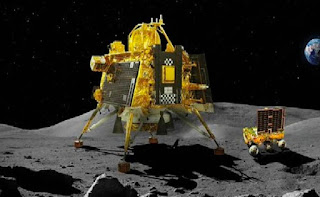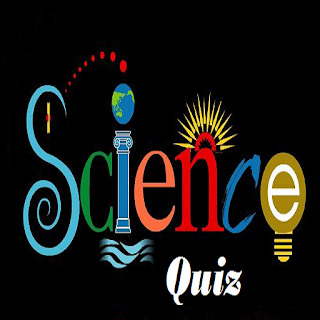RIDING ON THE SUCCESS OF CHANDRAYAAN AND ADITYA
RIDING ON THE SUCCESS OF CHANDRAYAAN AND ADITYA
Nikunja Bihari Sahu
The successful soft-landing of
ISRO's Chandrayaan-3 spacecraft on the Moon and the subsequent launch of Aditya
L1 probe on a mission to the Sun can be viewed as not simply India's
demonstration of crucial technologies for the exploration of outer space, but
also the realization of the country's far-reaching goal of unravelling the
mysteries of the universe that would eventually usher in progress and prosperity
for the whole of humanity in line with our great ancient philosophy. In recent
years, space has no longer remained a secluded domain aloof from the human
activities, but has emerged as a frontier to further man's ambitions of making
its limits as his home and harnessing many space-based applications and
technologies for improving the quality of life on the earth. One of the direct
applications of space is the vast number of communication satellites stationed
in space that constantly relay radio signals to our television and smart phone sets
transcending the limits of time and space. Space applications has also helped
us immensely in the field of
remote-sensing of earth based resources, weather forecasting, forest cover mapping, assessment of wildfires,
crop production, disaster management, navigation, remote education and many
others of which we are the direct beneficiaries.
However, exploring the Moon,
our immediate celestial neighbour, has remained as a prime goal for humanity
ever since the beginning of the Space Race in the Cold War period between the USA
and the erstwhile Soviet Union in the nineteen fifties and beyond. While the
Soviet Union's Luna series of missions was able to first visit the Moon achieving
many astonishing feats like soft landing, rover manoeuvres and sample
collections of lunar soil, the USA, on the other hand, had an even bigger
accomplishment by landing its men for the first time on the Moon through its Apollo11 mission in 1969. After
the end of the Cold War and the subsequent collapse of the Soviet Union, the
Space race has been joined by several other developed and developing nations of
the world notably the European Union, China, India, Japan, UAE and Israel.
Of particular mention, is the emergence of China as
a major space power that has made rapid strides in recent days in mastering various
space feats and space technologies. In
recent years, China has not only sent missions to the Moon and Mars,
but also built its own space stations and
has sent astronauts to space . It also plans to land astronauts on the Moon by 2030 and build a permanent base there
with a long term goal of making Chinese presence on this strategic location for
mining Moon's resources or also for use in military purposes. While comparing our
space achievements to China, it transpires that we are way behind them in
several fields. While China already had its own operational space station, we
have none so far. They have also been able to land their rover on the Mars and
were the first in the world to reach the Moon's far side. China achieved an
even greater feat by sending its astronaut to space in the form of Yang Liwei
aboard the Shenzhou-5 spacecraft in 2003. We are lagging behind them in our
manned mission programme by many a mile as our Gaganyaan human spaceflight
program is running behind the schedule with a launch expected no sooner than
late 2024.
Considering all these aspects, India's
latest outbursts in space exploration were a feat long due for a country of 1.4
billions and having the advantage of inheriting some of the
greatest space legacies of the world founded by outstanding scientists like
Vikram Sarabhai, Satish Dhawn and U R. Rao. ISRO was set up only in 1969 (few
days later the USA landed its astronauts on the Moon) and it took as many as 54 years to achieve a soft-landing of its
unmanned spacecraft on the Moon. The delay is understood considering the
developing status of the country's economy where it has other emergency sectors
like health, education and agriculture to be looked into.
However, the recent achievements with Chandrayaan and Aditya have also some silver linings to be cherished
with. India became the first country in the world to soft-land its Vikram lander
near the Moon's South Pole and to explore its treasure trove of resources
through the Rover Pragyan. As it can be remembered, Russia's Luna 25 mission
which was launched with a much powerful Soyuz rocket compared to our own LMV III
vehicle was poised to create history by landing near the Moon's South Pole few
days ahead of Chandrayan-3. However, in a sudden turn of events, it crashed due
to anomalies in its orbit correction manoeuvres allowing India's Chandrayaan-3
to score a decisive first. In contrast, all the orbit correction manoeuvres of
ISRO throughout the Chandrayaan-3 mission, be it around the Earth or the Moon,
have come out in flying colours with precise accuracy and flawless performance which
has been the hallmark and the major contributing factor for the success of the
mission. Secondly, ISRO has demonstrated how a lofty and grand space mission could
be accomplished with a minimal and affordable investment cost compatible for a
developing nation like India with the Chandrayaan-3 project serving as a
burning example costing only 615 crores
rupees which is less than the production cost of a Hollywood movie. Thirdly,
the performance of ISRO in all its departments, launching to separation to
orbit raising to injection to landing to rover and many more , had been
immaculate and flawless which is a testimony to its quite professional approach and enormous capability.
Fourthly, the fact that a number of lady
scientists of ISRO were involved in key decision making processes of both the
missions testifies the strength of India's women power and the country's
diverse intellectual resource. It may be remembered that while the
Chandrayaan-3 project soared high under the able leadership of Dr Kalpana
Kalahasti as the Assistant Director of the
mission , Dr. Nigar Shaji, another
outstanding lady scientist of ISRO was
the brain behind India's landmark journey to the Sun in her capacity as the Project Director of Aditya
mission. Lastly, having delved too much on our Chandrayan programme, it will be
unfair if we miss the success story of our Aditya mission. The mission has
seven scientific payloads, contributed by different scientific organisations of
the country, that will carry out detail investigation of the solar physics and
its impact on the space weather of which we are an integral part and that is
again an effort to further our knowledge
about the mysteries of the cosmos. It is worthwhile to mention that although
the Sun itself has created the Solar system and sustains life on our planet
Earth, it also causes large scale devastations on the Earth when it is angry in
the form of bursting high energy radiations and charged particles to our
biosphere. Hence, it is very much imperative that we study the Sun in all its
derails for protecting life on the Earth and, in this context, India's Aditya mission is a step forward to
realize this very important goal. If the mission is accomplished, India will become
the sixth country in the world after the USA, Russia, EU, China and Japan to
have accomplished the feat with again a feather in its already illustrious cap.
With ISRO's next big achievement the Gaganyaan manned
spaceflight mission knocking on the door, we hope that the recent successes in
space will inspire our young generations substantially to embrace careers in
science to take our country to new heights of glory.
Education Officer
Regional Science Centre
Bhopal
Phone: 8917637974
To read the same article published in The Orissa Post, please click the following link :




Comments
Post a Comment